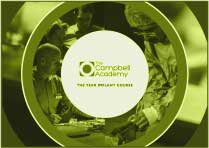
A few blogs ago, I wrote about perplexity.
It's AI that's been developed basically as a search engine for the whole of the Internet.
This may not sound particularly dramatic, but it's 100 times better than anything you could get from Google DuckDuckGo or any of the other search engines that you use.
It doesn't present the information as lists of websites; it presents it as usable conversational information that is referenced and sourced.
If you pay the extra £20 a month for it, you get the most extraordinary depths of searches on the Internet.
There's basically nothing it can't find in a way that's presented to you within about 10 seconds to let you move forward after the question has been answered.
The problem is that, yet again, technology shifts quickly and moves forward.
We're using AI at work quite a lot in marketing now (not to generate deepfakes, though).
If you were to chat with my son Callum, who's recently finished his GCSEs, he would openly tell you that he used Chat GPT-4 to write his huge sports studies project and was only marked down by two marks because, he said, his writing style wasn't complicated enough.
Pretty much everyone in his class used GPT-4; pretty much all the teachers knew they did.
The world has changed a lot in the past 2 to 3 years.
Then, the robot arrived at the practice, and dynamic guided surgery was performed in the form of Straumann's Falcon Unit.
It is sitting on the desk, waiting to be used, although it's missing a couple of spare parts and a professional calibration from someone in Switzerland, which will have happened by the time you read this blog.
In true keeping, though with what I've said in previous blogs, my job is not necessarily now to be an expert in Falcon, my job is to look after the people who will be the experts in Falcon.
The Falcon will be in the practice, and we'll be placing implants using dynamically guided surgery (the eyeglasses with a robot guiding the way) within the next few weeks in practice.
How does that leave us where we are now?
Where does it mean we'll be in the next 2 to 3 or five years?
This is how things move quickly.
This is where confusion comes from.
One of the most important things for us is keeping up with the rapid explosion of technology.
I thought we were sophisticated four years ago when we opened the practice, but we have way more technology, software, and hardware now than we had then.
All of this comes with a huge financial burden of what is known as tech or legacy debt, stuff that needs to be replaced moving forward and has to be paid for.
But there is also the problem of how things talk to each other. When they change, will they still talk to each other? And how much should we invest in this, and should we cut back on that?
In just a couple of months, my long-term friend Stuart Reekie, who has been an IT expert for the council for 25 years, will start in the practice as our business development manager.
Business development is about technological development for us.
Stuart doesn't have to be in external business development where he goes out and finds work; we have other people to do that.
Stuart will have to manage everything related to everything I've said above, including hardware, software, new projects, legacy debt budgets for IT, Security, safety, and all of that stuff.
Does everything talk to everything else? Is it worth it? Are there any changes that would make us more effective, less expensive, dynamic, and agile?
These are essential things for all businesses moving forward, but essential in particular for us and so the investment in Stuart is way more important and buying another intraoral scanner or a printer or another computer.
It removes the confusion, but more importantly for me, it takes a lot of these questions out of my head and puts them into somebody else's.
Blog Post Number - 3859





Leave a comment